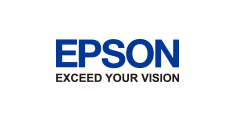Microcontrollers
2022-07-15
●Epson microcontroller overview
■Low power microcontrollers
▲The technologies of low voltage operation and low power consumption acquired over the years through the development of 4-bit microcontrollers for watches and electronic shelf labels (ESL) are inherited by 16- and 32-bit microcontrollers today. The product lineup has been expanded, while achieving better throughputs. The display functions range from small-sized segment LDC drive to QVGA color display. A wide array of sensor interfaces recently attracting attention are also available. In addition to digital SIO such as SPI, UART, and I²C and the low power ADCs, the Epson original frequency conversion type ADC is capable of supporting measurements by resistance thermometer sensors and humidity sensors. A variety of these functions, low power technology and a highly effi cient processor are all built into a single chip. With this one-chip solution, Epson continues to offer optimum products for small-sized battery-driven equipment, operation panel controllers, and sensor built-in healthcare products and housing equipment.
■Lowest Current Consumption (16-bit microcontrollers)
▲In most cases, the S1C17 Family of products will allow customers currently using 8-bit microcontrollers to enjoy higher performance with the same power consumption. In addition, it will enable customers already using 16-bit/32-bit microcontrollers to benefit from longer battery life as a result of low operating voltage.
■Four types of clock sources
▲Four types of characteristic clock sources can be freely selected for each circuit.
■Terminals can be allocated freely (Universal Port Multiplexers)
▲SPI, I²C, UART, 16-bit PWM, and other terminals can be freely allocated as individual UPMUX terminals using software.
●Features of Epson microcontrollers
■Supporting various types of LCD
▲Black & White LCD driver
◆Segment LCD driver
◆12 to 88seg x 4/8com
◆1/3 bias LCD voltage booster built-in
▲Dot Matrix LCD driver
◆56 to 128seg x 16/24/32/64com
◆1/4,1/5 bias LCD voltage booster built-in
▲Models containing Black & White LCD driver :
◆S1C17W10 group
◆S1C17W20 group
◆S1C17W30 group
◆S1C17M30 group
◆S1C17M40 group
◆S1C31W00 series
▲LCD controller
◆STN/TFT LCD controller
◆320 x 240monochrome / 320 x 240 (QVGA)16gradations
◆Memory display controller
◆300 x 300 6-bit color / 640 x 640 Black & White
◆Supporting graphic engine function
◆Models containing LCD controller :
◆S1C17800 series
◆S1C31D00 series
▲Segment EPD driver
◆42 to 256seg + TP/BP
◆Voltage booster built-in
◆Models containing EPD driver :
◆S1C17F00 series
▲Segment LED driver
◆8seg x 5com supporting 5V
◆Models containing LED driver :
◆S1C17M12/M13
■Low power microcontrollers
▲The technologies of low voltage operation and low power consumption acquired over the years through the development of 4-bit microcontrollers for watches and electronic shelf labels (ESL) are inherited by 16- and 32-bit microcontrollers today. The product lineup has been expanded, while achieving better throughputs. The display functions range from small-sized segment LDC drive to QVGA color display. A wide array of sensor interfaces recently attracting attention are also available. In addition to digital SIO such as SPI, UART, and I²C and the low power ADCs, the Epson original frequency conversion type ADC is capable of supporting measurements by resistance thermometer sensors and humidity sensors. A variety of these functions, low power technology and a highly effi cient processor are all built into a single chip. With this one-chip solution, Epson continues to offer optimum products for small-sized battery-driven equipment, operation panel controllers, and sensor built-in healthcare products and housing equipment.
■Lowest Current Consumption (16-bit microcontrollers)
▲In most cases, the S1C17 Family of products will allow customers currently using 8-bit microcontrollers to enjoy higher performance with the same power consumption. In addition, it will enable customers already using 16-bit/32-bit microcontrollers to benefit from longer battery life as a result of low operating voltage.
■Four types of clock sources
▲Four types of characteristic clock sources can be freely selected for each circuit.
■Terminals can be allocated freely (Universal Port Multiplexers)
▲SPI, I²C, UART, 16-bit PWM, and other terminals can be freely allocated as individual UPMUX terminals using software.
●Features of Epson microcontrollers
■Supporting various types of LCD
▲Black & White LCD driver
◆Segment LCD driver
◆12 to 88seg x 4/8com
◆1/3 bias LCD voltage booster built-in
▲Dot Matrix LCD driver
◆56 to 128seg x 16/24/32/64com
◆1/4,1/5 bias LCD voltage booster built-in
▲Models containing Black & White LCD driver :
◆S1C17W10 group
◆S1C17W20 group
◆S1C17W30 group
◆S1C17M30 group
◆S1C17M40 group
◆S1C31W00 series
▲LCD controller
◆STN/TFT LCD controller
◆320 x 240monochrome / 320 x 240 (QVGA)16gradations
◆Memory display controller
◆300 x 300 6-bit color / 640 x 640 Black & White
◆Supporting graphic engine function
◆Models containing LCD controller :
◆S1C17800 series
◆S1C31D00 series
▲Segment EPD driver
◆42 to 256seg + TP/BP
◆Voltage booster built-in
◆Models containing EPD driver :
◆S1C17F00 series
▲Segment LED driver
◆8seg x 5com supporting 5V
◆Models containing LED driver :
◆S1C17M12/M13
- +1 Like
- Add to Favorites
Recommend
All reproduced articles on this site are for the purpose of conveying more information and clearly indicate the source. If media or individuals who do not want to be reproduced can contact us, which will be deleted.



























































































































































































































































































































































































































































































































































































































































































































































































































































































































